Different Types of Therapy at The Clare: What They Are and How They Work
Maintaining independence and strength becomes increasingly important as we age. That’s why different types of therapy are important for seniors to improve quality of life. At The Clare, therapy services are offered within the community and are accessible for all residents.
Ginetta Shehade, Therapy Manager and Rehab Director at The Clare, discusses therapy services at The Clare and what they entail. She explains the different disciplines, what therapy looks like and the benefits of therapy through this onsite service in the community.
Different Disciplines of Therapy
The Clare offers three different disciplines of therapy for residents:
– Physical therapy
– Occupational therapy
– Speech therapy
Physical Therapy
Goals: To get from Point A to Point B safely and efficiently.
When Residents Need Physical Therapy: During recovery from injuries, falls and surgeries.
Benefits: Improves balance and strength; prevents further injuries; and teaches how to use or wane off of an assistive device.
What Physical Therapy Looks Like at The Clare: Balance work is a main focus of physical therapy. At The Clare, therapists will implement exercises to get residents out and about in a realistic way. For example, therapists will observe if a resident is able to get on and off a bus safely or navigate a curb step.
Occupational Therapy
Goals: To improve activities of daily living (ADLs).
When Residents Need Occupational Therapy: When tasks such as showering or bending down become difficult.
Benefits: Strengthens motor skills and upper body mobility.
What Occupational Therapy Looks Like at The Clare: Occupational therapy at The Clare provides tools and suggestions to help with daily activities, such as installing non-slip bathmats or objects to help residents grab and hold as they complete typical tasks. A urinary incontinence program is also offered to help residents with accidents and practice strengthening strategies to avoid future mishaps.
Speech Therapy
Goals: To promote independence.
When Residents Need Speech Therapy: If trouble eating becomes an issue or memory loss arises.
Benefits: Improves quality of life (including the ability to swallow) and strengthens memory.
What Speech Therapy Looks Like at The Clare: Speech therapy addresses memory and diet. For memory, strategies are taught to boost recall, such as how to keep track of a calendar and writing things down. This also addresses medication management, so residents can properly keep track of their daily dosage. For diet, if a resident is having trouble swallowing or if they find themselves coughing during a meal, they can order a swallow study that addresses those issues to evaluate why you may be experiencing difficulty swallowing.
Different Types of Therapy
The disciplines of therapy fall under the three different types of therapy, which distinguish the settings in which they take place, whether that is in The Terraces or at home.
Skilled Therapy
– Rehabilitation that takes place in The Terraces to help residents recover from surgery or injury.
– Therapists work closely with residents on skilled care floors.
– Residents will stay in The Terraces and go through rehabilitation after surgery.
Outpatient Therapy
– Rehabilitation that takes place in common spaces in The Terraces or in a resident’s home and serves as a follow-up to surgeries and injuries.
– Can take place in a group setting.
– Helps keep residents mobile.
– Available for Assisted Living and Independent Living residents.
Home-Health Therapy
– Rehabilitation that takes place in the comfort of a resident’s home if they’re homebound.
– Serves as a safety measure to avoid further injuries.
– Available for assisted and independent living residents.
Benefits of Therapy for Older Adults at The Clare
With the different types of therapy offered at The Clare, Ginetta says that there are many benefits for the residents to utilize these services.
“Our therapists get to know the residents and help them stay comfortable,” she says. “They get to feel like a priority, and we implement a personalized routine for them.”
Onsite therapy for older adults is more convenient and accessible, especially those who aren’t as mobile as others. They don’t have to worry about going to a third-party service, for example, when it’s offered right in their community. Residents also have access to complimentary screenings if they are considering therapy and want to learn more about what it entails. What’s more, therapists at The Clare also track residents’ progress and monitor any recent falls they’ve faced.
“Tracking their falls allows us to reach out to that person and offer them a screening,” Ginetta says. “Maybe the fall was just a fluke or maybe their balance is off, and they need some physical therapy.”
Besides the logistical benefits of therapy offered in the community, there’s also a communal benefit, Ginetta says.
“If we hear from employees or other residents to check on certain residents, we reach out to them,” she says.
What Residents Should Know about Therapy
Often, residents assume they don’t need therapy because they feel strong, or they’re able to walk just fine. Residents may also think that if they participate in therapy, they’ll get stuck with an assistive device. These concerns aren’t necessarily true, Ginetta says.
“We work to implement preventive measures for the residents to be safe and healthy,” she says. “Therapy at The Clare is designed to assess your specific needs, followed by an individualized plan of care to assist with daily functions, pain reduction and overall well-being improvement.”
Ginetta also says that they work closely with the residents’ doctors and insurance providers to make sure that they’re covered and receiving assistance best suited for them and their needs.
Overall, therapy for older adults is expansive, and it addresses deficits in strength and endurance, reevaluates the way residents complete daily tasks and improves balance. It also promotes greater independence and safety among The Clare’s residents by implementing preventative measures and caring for the residents’ specific needs.
“Whether someone is appropriate for skilled, outpatient or home health therapy, you have access to familiar faces that provide continuity of care,” Ginetta says.






